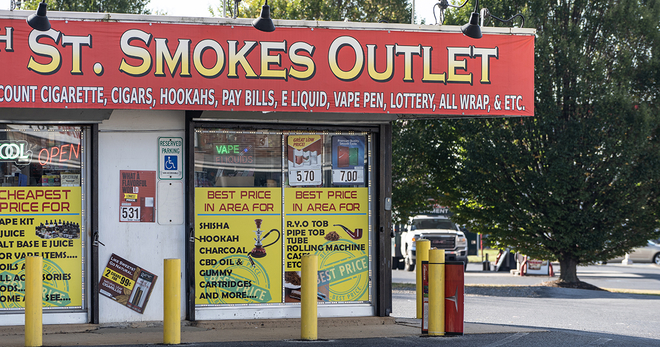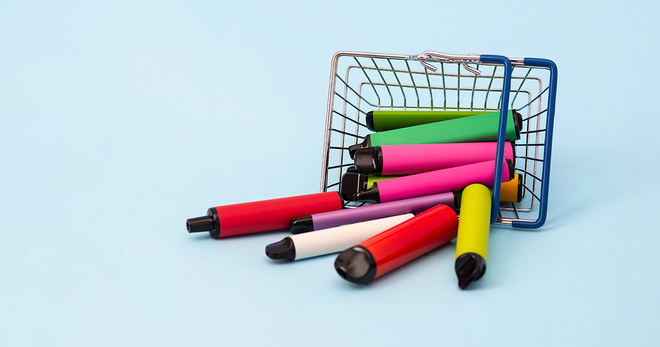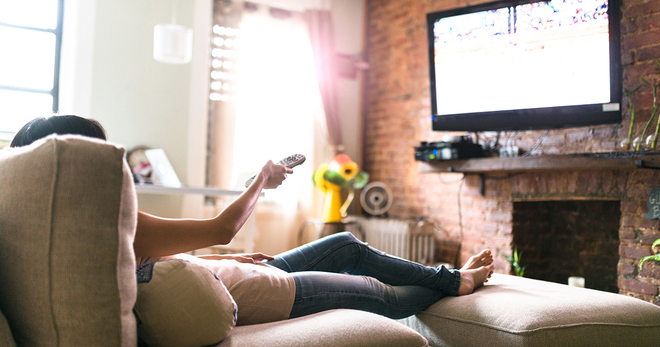Measuring disparities in tobacco advertising exposure
It’s clear that communities have different amounts and types of tobacco advertising: low-income neighborhoods have more tobacco advertising overall. Black communities have more menthol product advertising. Rural white communities have more ads for smokeless tobacco.
But how can we better measure people’s exposure to that advertising? And what effect does that exposure have?
To begin to answer those questions, Schroeder Institute® for Tobacco Research and Policy Studies at Truth Initiative® investigator Shyanika Rose led researchers to look at the experiences of 30 young adults over two weeks.
The study participants, all non-smokers between the ages of 18 and 25 living and working (or going to school) in Washington, D.C., a city of about 680,000 people with a 48 percent African-American population, received up to six mini-surveys a day via mobile device.
Could they see any advertising at that moment? Were they around people using a tobacco product? Had they been anywhere that sold tobacco since the last survey? Their responses to these questions generated a list of about 46 stores selling tobacco. Rose then deployed a research assistant to record tobacco ads at each store.
Here, we ask Rose about her findings, future research and what studies like this could mean for health equity policies.
Q: How is this research different from other studies that measure tobacco advertising in communities?
A: This was a pilot study for a “person-centered” approach to advertising exposure. We are trying to get at both the subjective measurement—the real-time exposure a person has—and the objective measurement of recording what is in the stores that they may not be attuned to. Theory would suggest that the more you are exposed to advertising, the more positive feelings you would have about the products you are seeing.
Those perceptions are an implicit cognitive process. Advertising does work and one of the ways it works is not through people consciously thinking “this product is great.” A lot of it, especially for tobacco, is just frequency. People think it’s much more normalized than it is, that everyone must be doing it because it’s in the environment where you are and it’s highly available.
Q: What are some findings you saw?
A: We found that flavored tobacco products account for much of the disparities in the amount of tobacco advertising in minority and low-income communities in Washington, D.C. Non-flavored advertising is more generally distributed. This implies that restrictions on flavored tobacco could produce more health equity. A ban or restrictions on flavored products would reduce the overall amount of marketing people are exposed to. It would also, of course, specifically reduce their exposure to advertising for flavored products, which we know are more appealing to young people than non-flavored products.

Q: Can we infer anything about other cities based on these observations about D.C.?
A: D.C. is a majority-minority city (minority racial groups make up more than 50 percent of the city’s population), and there are a lot of segregated neighborhoods. I think we could expect to see consistent findings in areas with similar demographics. There is also evidence that neighborhoods in major U.S. cities are becoming more segregated, so what we are seeing in D.C. could be a bellwether for other areas.
Q: What’s next for this research?
A: We are hoping to do more research in D.C. on vulnerable groups. We want to think more deeply about health equity and the types of factors that may put individuals at risk. We also want to do a longitudinal follow-up to look at whether people start or increase tobacco use with advertising exposure.
Find out more on the disproportionate affect tobacco has on low-income and racial and ethnic minority communities.
More in tobacco industry marketing
Want support quitting? Join EX Program
By clicking JOIN, you agree to the Terms, Text Message Terms and Privacy Policy.
Msg&Data rates may apply; msgs are automated.



